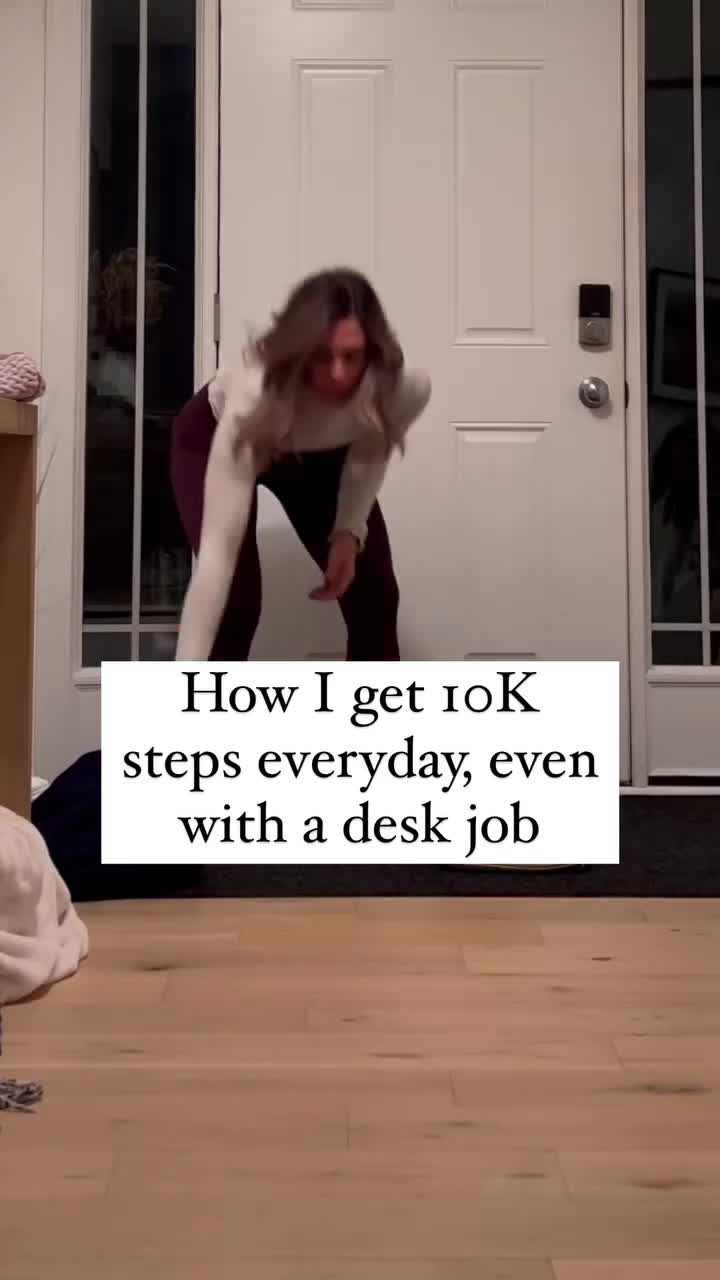Hitting a daily step count is a popular way of increasing movement and activity levels in day-to-day life in a low-impact, safe and free way. While the jury’s out on the precise number – a 2023 study showed that between 7,000 and 8,000 was the sweet spot for lowering the risk of disease and premature death – 10k is still burned into common consciousness as the golden number to aim for.
Despite working a desk job like so many of us, Trish Koeslag, women’s nutrition and fitness coach, makes getting in her 10k steps a non-negotiable. ‘I sit for HOURS at a time, literally. But I still hit 10k+ steps daily,’ she explains. Here’s how she breaks them up into manageable sets to squeeze them in throughout her work day.
1. Set a non-negotiable minimum step count
‘And NEVER fall below it,’ Koeslag stresses. ‘I aim for 10K steps each day. If I haven’t hit it by the end of the night, I don’t sit down until I do! I like keeping promises I make to myself.’ She normally breaks that up by going for a ‘one hour walk to get in a good chunk of those steps’ and then doing the rest ‘through incremental movement’.
Related Stories2. Get up and move while talking, scrolling or texting
‘You can just walk around your house!’ Koeslag points out. So even if you’re working from home, you don’t need to open the front door or even leave the room to get some steps in. ‘Circle your dining room table!’ suggests. ‘Go up and down your stairs! Walk the length of your driveway and back!’
In the office, taking a work call while you’re pacing up and down a meeting room, walking between different areas, or popping out to get a snack is also good way of increasing blood flow to the brain, enhancing cognitive function and sparking new ideas and connections for enhanced productivity.
 3. Park far away from any entrance
3. Park far away from any entrance
Another tip from Koeslag involves walking a little bit further to ‘grocery stores, shopping malls, gyms, or the post office’. Take it a (literal) step further and get off your train a stop earlier during your work commute, or park slightly further away.
4. Invest in a walking pad
A game-changer especially when it comes to marrying work and physical activity, especially in frostier weather, walking pads have soared in popularity in the last year or two, thanks in part to social-media approval.
Place these treadmills under your table, or ‘do what I did and place a block of wood across the treadmill arms to create a makeshift desk,’ suggests Koeslag. Because they’re designed to be used at low speeds – most have a range of 0.5 up to 4mph – they’re compatible for multi-tasking and looking at a screen. ‘You can walk at a slow speed and work, watch TV, or talk on the phone.’
5. Go for an after-dinner walk
It’s tempting after a long day at a desk to want to just sit at home and decompress. But swapping the short-term indulgence for a quick stretch will be better for you in the long run. ‘Instead of plopping on the couch’, going for a walk after eating will reduce blood-sugar levels, especially if the meal has been rich in refined carbohydrates or sugars, and increases the metabolic cost on your body more than just digesting.
Related Stories6. Plan your day in advance
Much like organising formal workout sessions, Koeslag recommends you ‘actually schedule your walks into your calendar’ to ensure you’ve accounted for them as an activity to make time for, such as a brisk walk before or after work or during lunch. ‘I front load all my activity because that works best for me!’ she says.
7. Walk 10 minutes before and after your workout
Koeslag advises that you ‘do this as a warm-up’ to increase blood flow to muscles and prepare your body for more intense activity, and to help it transition back to a resting state.
8. Take the stairs
Another classic, Trish swaps lifts and escalators for a quick cardio burst – perfect if your office is up a few flights.
9. Stop making excuses
Not exactly a practical tip, Koeslag reminds us of the importance of mindset when it comes to setting up a routine you’ll stick to. ‘There is more than enough time in a day to get plenty of movement,’ she notes, even if it means breaking it up or pairing it with another activity if your calendar is really full.
Cut through the noise and get practical, expert advice, home workouts, easy nutrition and more direct to your inbox. Sign up to the WOMEN’S HEALTH NEWSLETTER
Related Stories
